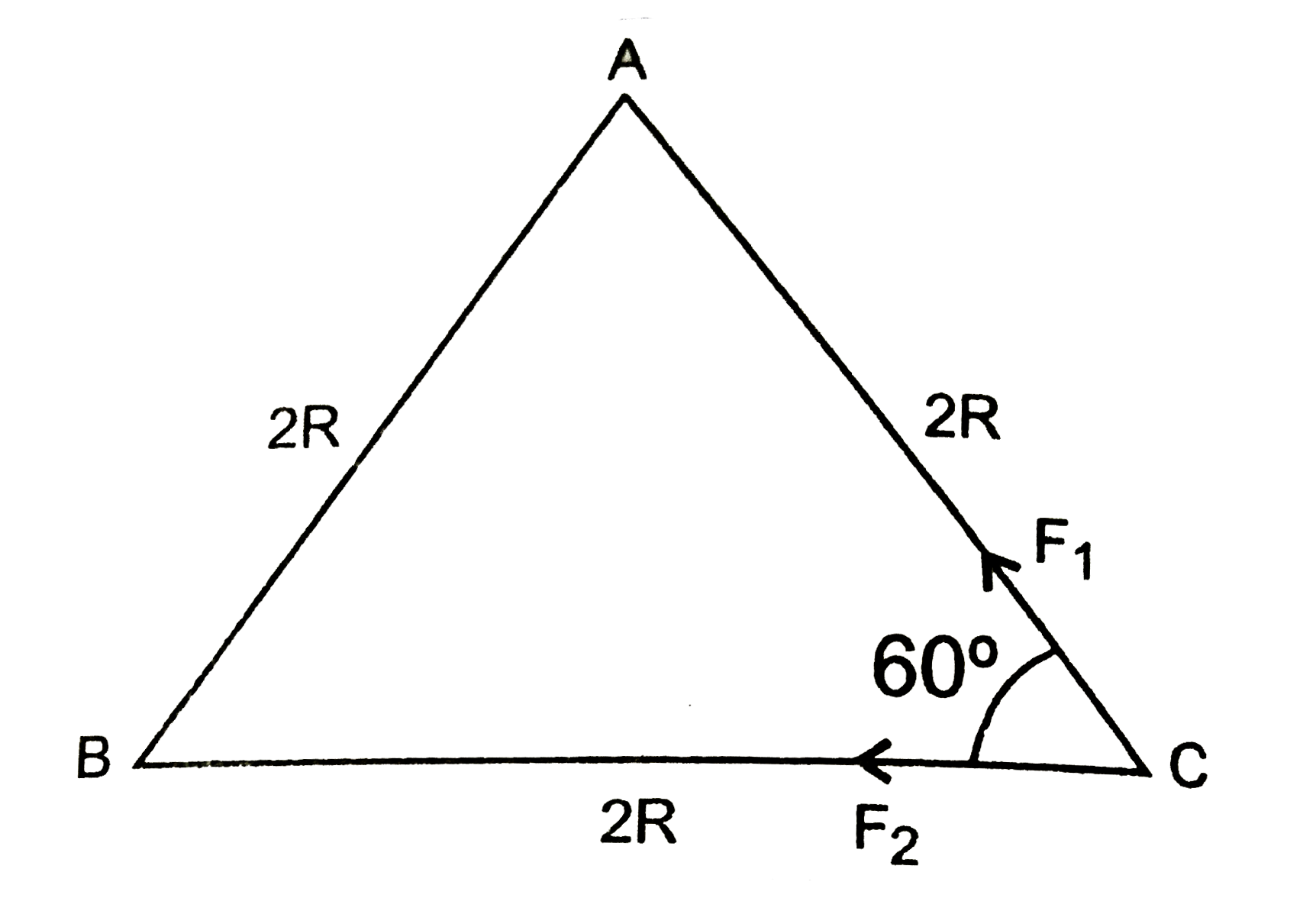Three uniform spheres each having a mass M and radius a are kept in such a way that each touches the other two. Find the magnitude of the gravitational force on any of the spheres due to the other two.
As per question, three point masses, each of mass M are lying at the vertices of an equilaternal triangle of side 2R, Fig.

Force of attraction on sphere C due to sphere A
is F1=Gm×m(2R)2=Gm24R2 along CA
Force of attraction on sphere C due to sphere B
is F2=Gm×m(2R)2=Gm24R2 along CB
These force −→F1 and −→F2 are inclined at an angule 60∘
So the resultant force on sphere C is
F=√F21+F22+2F1F2cos60∘
=√F21+F21+2F1F1×1/2
=√3F1=√34Gm2R2
Topper's Solved these Questions
- GRAVIATIONBOOK - PRADEEPCHAPTER - GRAVIATIONEXERCISE - CONCEPTUAL PROBLEMS II.
1 Videos
- GRAVIATIONBOOK - PRADEEPCHAPTER - GRAVIATIONEXERCISE - CONCEPTUAL PROBLEMS III.
1 Videos
- GRAVIATIONBOOK - PRADEEPCHAPTER - GRAVIATIONEXERCISE - CONCEPTUAL PROBLEMS I.
1 Videos
- BEHAVIOUR OF PERFECT GAS & KINETIC THEORYBOOK - PRADEEPCHAPTER - BEHAVIOUR OF PERFECT GAS & KINETIC THEORYEXERCISE - Assertion - Reason Type questions
14 Videos
- KINEMATICSBOOK - PRADEEPCHAPTER - KINEMATICSEXERCISE - 1 NCERT Comprehension
4 Videos
Similar Questions
Thee uniform spheres each having a mass M and raius a are kept in such a way that each touches the other two. Find the magnitude of the gravitational force on any of the spheres due to the other two.
View SolutionThree uniform spheres, each having a mass M=5kg and radius a=2.5m are kept in such a way that each touches the other two. Find the magnitude of the gravitational force in GN on any of the spheres due to the other two.
View Solution
Knowledge Check
Three uniform spheres each of mass m and diameter D are kept in such a way that each touches the other two, then magnitudes of the gravitational force on any one sphere due to the other two is
A3Gm2D2B2√3Gm2D2C√3Gm24D2D√3Gm2D2Three identical spheres, each having a charge q and radius R. are kept in such a way that each touches the other two. The magnitude of the electric force on any sphere due to the other two is
A14πε0(qR)2B√34πε0(qR)2C√316πε0(qR)2D√516πε0(qR)2Three uniform spheres, A, B and C each of mass M and radius R are kept in such a way that each sphere touches the other two. What is the magnitude of the gravitational force acting on A due to B and C ?
A√3GM24R2B√3GM2R2C3GM24R2D√3GM22R
Three circles each of radius 7cm are drawn in such a way that each of them touches the other two. Find the area enclosed between the circles.
View SolutionThree circles each of radius 3.5 cm are drawn in such a way that each of them touches the other two. Find the area enclosed between these three circles (shaded region).
View SolutionThree circles of radius 3.5 cm each are placed in such a way that each touches the other two. The area of the portion enclosed by the circles is
View SolutionThree circles of radius 63 cm each are placed in such a way that each circle touches the other two. What is the area of the portion enclosed by the three circles ? (in sq. cm)
View SolutionTwo metal spheres each of radius r are kept in contact with each other. If d is the density of the material of the sphere,then the gravitational force between those spheres is proportional to
View Solution
